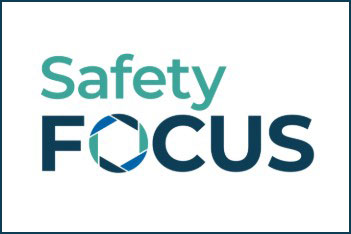
At SeminarFest 2018, Heath Suddleson, PSP/DTM PID, president at the Project Leadership Academy, will present “From Project Manager to Project Leader.” In this course, Suddleson will discuss some skills that distinguish a project manager from a project leader, and how an OSH professional can implement those skills to drive success on projects and in companies.
A key to success for any business is management providing the necessary leadership and resources for work teams to succeed. Many people manage, but true project leaders give their teams the support they need to reach their full potential.
At SeminarFest 2018, Heath Suddleson, PSP/DTM PID, president at the Project Leadership Academy, will present “From Project Manager to Project Leader.” In this course, Suddleson will discuss some skills that distinguish a project manager from a project leader, and how an OSH professional can implement those skills to drive success on projects and in companies.
Empower & Enable
When speaking about the attributes that make someone a great project leader, Suddleson says it comes down to one core characteristic, a focus on people.
“A project manager focuses on tasks and activities,” he says. “A project leader focuses on the people who have to perform those tasks and activities.” At SeminarFest, Suddleson will speak to attendees about keeping the perspective on the people, not the tasks.
To be effective, Suddleson says project leaders must do two things: 1) empower their team and 2) enable their team. Empowering a team means giving it the ability to go out and accomplish its goals, which includes taking initiative and taking risks.
“You can’t empower your team without allowing them to take some risks,” he says. “And if they take risks they’re going to make mistakes, and you have to back up your team when that happens.”
Enabling a team involves providing the right tools and removing road blocks, which is where a lot of project managers fail. Great project leaders provide the resources for their teams to succeed, and allow them to use their own creativity and take ownership of the tasks assigned to them.
Motivate
Along with empowering and enabling their teams, project leaders know how to properly motivate and incentivize their employees in order to achieve the desired results. When project leaders reward the behavior that they want, that’s when they will begin to change the safety culture across the organization.
“What gets rewarded gets repeated,” Suddleson says. “If you want people to take initiative, reward them for taking initiative. If you want to make sure that all work is tested before it gets turned over, reward people for testing their work before it’s turned over. It’s a simple concept, but very few people do it.”
Too often management inadvertently demotivates work teams by offering incentives that are either undesirable, or can only be achieved by meeting unrealistic goals. Project leaders offer incentives that are desirable and achievable to everyone on the team, set realistic goals and provide the resources necessary to achieve them.
Empathize & Advocate
One of the strongest attributes a leader can bring to a project is an empathy for the needs of all involved. Project leaders can then act as advocates to ensure that everyone’s needs are met. Empathy and advocacy, combined with the right attitude will help to ensure that projects are completed in the most effective, efficient and safest manner possible.
By having an empathetic perspective and placing themselves in someone else’s shoes, project leaders can identify ways to improve safety performance and increase productivity across an entire project. Empathy, advocacy and attitude are just some of the many soft skills that project managers can invest in to improve their business and get the most out of their teams.
“Soft skills translate to hard dollars,” says Suddleson. “Soft skills help safety professionals relate safety topics to the workers. You really can save your company a lot of money by investing in soft skills; you can cost your company a lot of money by not doing it.”
While all soft skills play an important role in safety improvement, Suddleson places attitude at the top of the list. “Your attitude is the most important tool you have in your toolbox,” he says. “If you use it well it can gain you everything; if you use it poorly it can cost you everything. How you use it is entirely up to you.”
Learn more about Suddleson’s course (#607) here.



